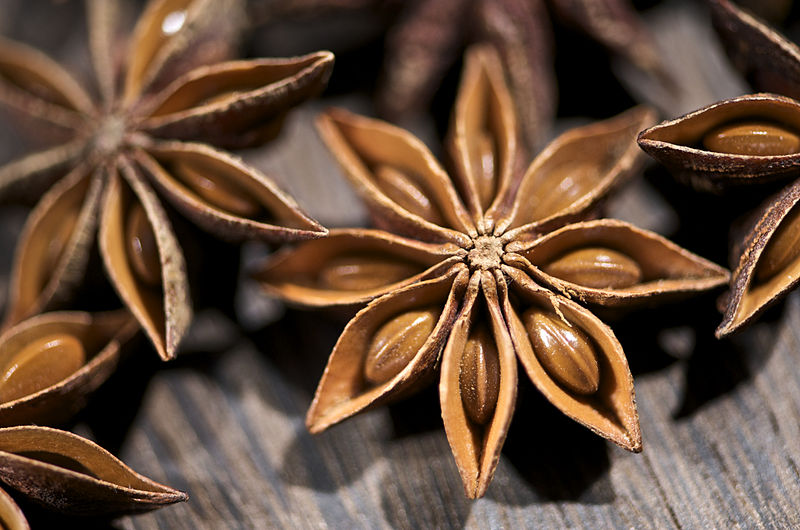Key Takeaways
- Fennel and anise both belong to the Apiaceae family and share a similar taste profile.
- The entire fennel plant is edible, while typically only the seeds from the anise plant are consumed.
- Both spices have different sensory and nutritional properties, despite being from the same family.
Spices are primarily cultivated for their edible components, such as leaves, stems, barks, flowers, or fruit, and are essential flavoring agents in many diets. Fennel and anise belong to this spice group and share a similar taste profile, as well as both plants having similar features. As a result, fennel is often referred to as anise or vice versa by most consumers. However, anise and fennel are two different plants, with the botanical name of anise being Pimpinellaanisum and fennel being Foeniculum vulgare. Both anise and fennel belong to the Apiaceae family. The entire fennel plant is edible, whereas it is typically the seeds from the anise plant that are consumed. This is the key difference between fennel and anise. Although both spices belong to the same family, anise and fennel have different sensory and nutritional properties. This article explores those differences between fennel and anise.
What is Fennel?
Fennel is a flowering plant species that belongs to the carrot family. It is a perennial herb with yellow flowers and feathery leaves. Native to Mediterranean countries, fennel has become extensively naturalized in many parts of the world, particularly on dry soils near coastal areas and river banks. It is considered a highly aromatic and flavorful herb with cooking and medicinal uses and is an essential spice in Indian and Sri Lankan cooking. The bulb-like stem base of fennel is consumed as a vegetable, and the plant is a food source for the larvae of some Lepidoptera species, including the anise swallowtail and the mouse moth.
What is Anise?
Anise, also known as aniseed, is a flowering plant in the carrot family. It is an annual herb, and the seeds are the edible component. Anise is native to the eastern Mediterranean region and Southwest Asia. Star anise, or Chinese anise, forms the eight-pointed star-shaped pod for its seeds. The seeds from star anise also give a very similar flavor to anise, but it is not part of the Apiaceae family, but rather the Illiciaceae family. Anise is considered a highly aromatic and flavorful herb with cooking and medicinal uses. Its flavor has similarities with fennel and licorice. Anise plants are also attacked by the larvae of some Lepidoptera species, including the anise swallowtail and the mouse moth.
What is the difference between Fennel and Anise?
Scientific Name:
Fennel: Foeniculum vulgare
Anise: Pimpinellaanisum
Scientific Classification:
Fennel:
Kingdom: Plantae
Order: Apiales
Family: Apiaceae
Genus: Foeniculum
Species: F. vulgare
Anise:
Kingdom: Plantae
Order: Apiales
Family: Apiaceae
Genus: Pimpinella
Species: P. anisum
Country of Origin:
Fennel originated in the shores of the Mediterranean.
Anise originated in the eastern Mediterranean region and Southwest Asia.
Tree Biology:
Fennel is a perennial herbal plant. It is erect and grows to heights of up to 2.5 m, with hollow stems.
Anise is an annual herbaceous plant growing to 90cm or more tall.
Seeds:
Fennel: Fennel seeds are often confused with seeds of anise, which are similar in taste and appearance. However, these seeds are smaller than anise seeds. Dried fennel seeds are very aromatic and anise-flavored spice. Initially, they are brown or green and slowly turn a dull gray as the seed ages.
Anise: The fruit is an oblong dry schizocarp, 3–6 mm long, typically known as “aniseed.”
Edible Part of the Plant:
Fennel: The entire plant, including bulb, foliage, and seeds
Anise: Only seeds
Damages by Pests:
Fennel is attacked by the larvae of some Lepidoptera species, including the mouse moth and the anise swallowtail.
Anise is attacked by the larvae of some Lepidoptera species (butterflies and moths), including the lime-speck pug and wormwood pug.
Uses:
Fennel: The bulb, foliage, and seeds of the fennel plant are used in many food dishes preparations. They are;
- The bulb is a crisp vegetable that can be stir-fried, stewed, simmered, grilled, or eaten raw.
- Young tender leaves are used for garnishing or to add flavor to salads. In addition to that, it is also used to flavor sauces, soups, and fish sauce.
- Florence fennel is used in the preparation of an alcoholic drink known as an alcoholic mixture
Fennel is also used as a flavoring in natural toothpaste and is used in cookery and sweet desserts. Fennel seeds are the main flavor constituent in Italian sausage and are also used in flavored tea preparation.
Anise is distinguished by its characteristic flavor. It is used for cooking various dishes and flavored tea production. Also, it is used to extract essential oil production.
In conclusion, both anise and fennel are essential culinary spices, and both have many similar sensory features. However, they are derived from two different plant species, and the entire fennel plant is used for consumption, whereas only anise seeds are used for human consumption.
References
Blamey, M. and Grey-Wilson, C. (1989). Flora of Britain and Northern Europe. ISBN 0-340-40170-2
Four new glycosides of stilbene trimer from Foeniculifructus (fruit of Foeniculum vulgare MILLER). Ono M, Ito Y, Kinjo J, Yahara S, Nohara T and Niiho Y., Chemical and pharmaceutical bulletin, 1995, vol. 43, no 5, 868-871 pages, INIST: 3610745.
S. Pruthi: Spices and Condiments, New Delhi: National Book Trust (1976), p. 19.
Philip R. Ashurst (1999). Food Flavorings. Springer. p. 33. ISBN 978-0-8342-1621-1.
Image Courtesy:
1. Fennel seed By Howcheng (Own work) [GFDL, CC-BY-SA-3.0 or CC BY-SA 2.5], via Wikimedia Commons
2. Star Anise Series (4297746909) By THOR (Star Anise Series) [CC BY 2.0], via Wikimedia Commons
